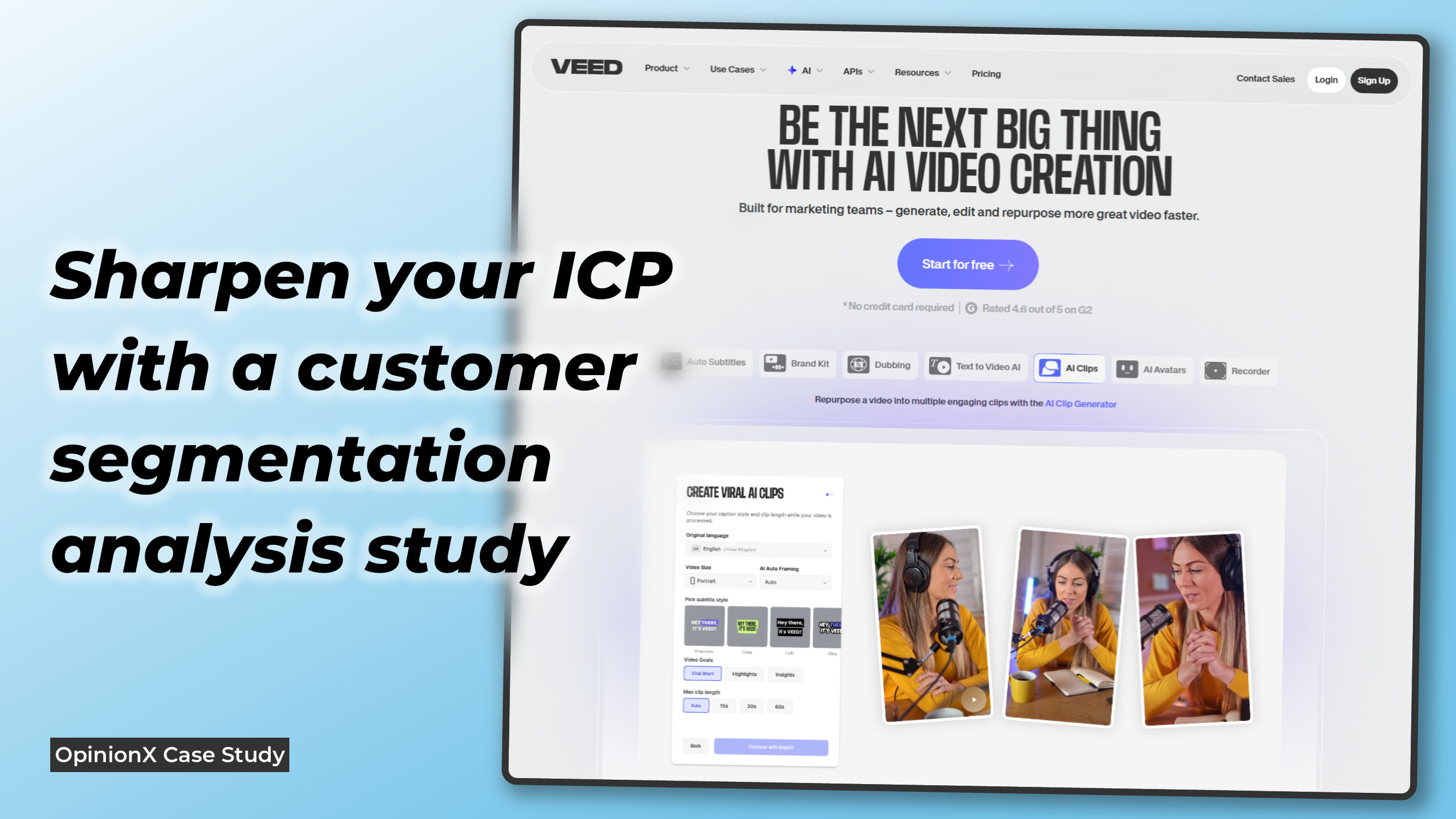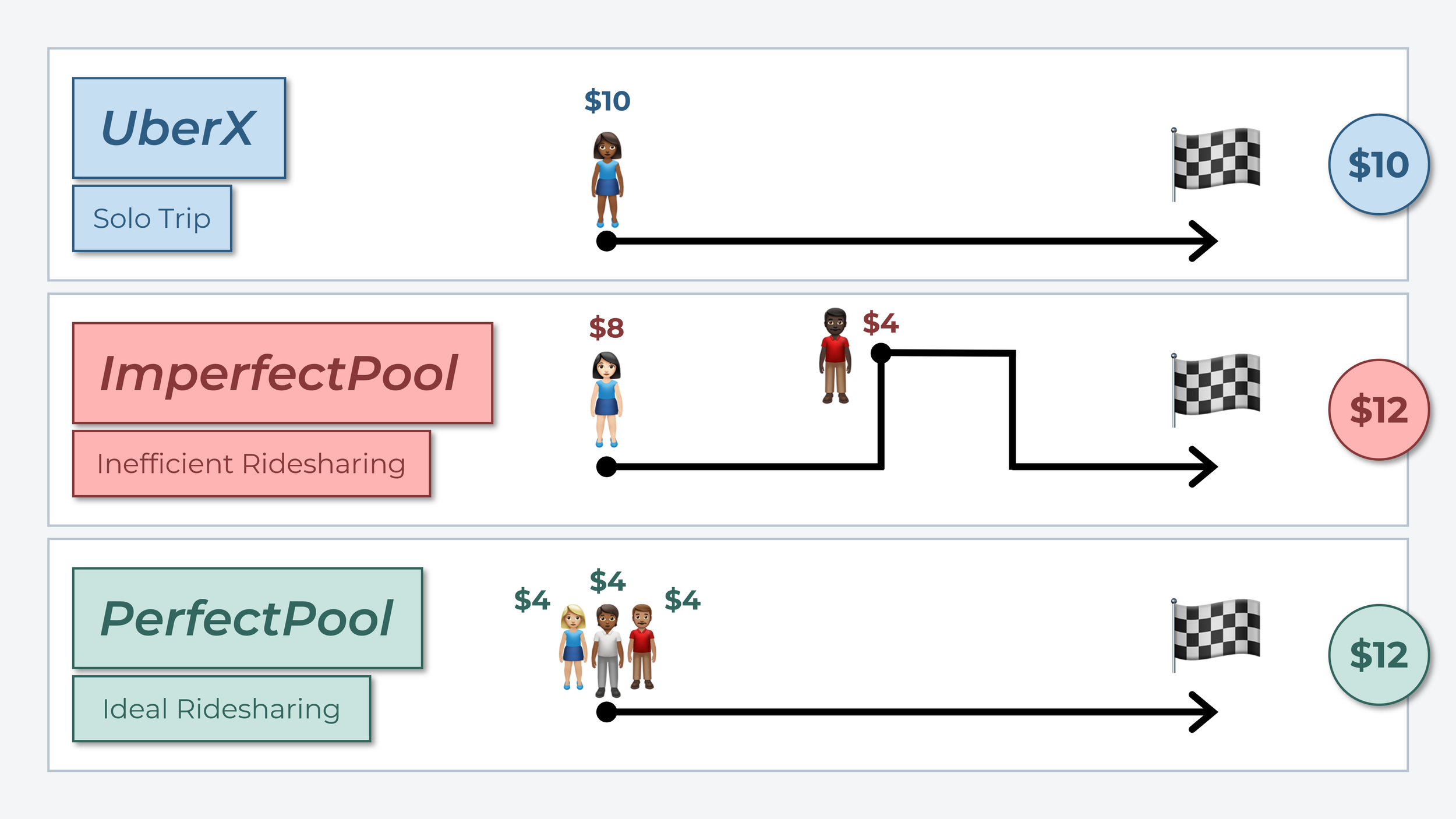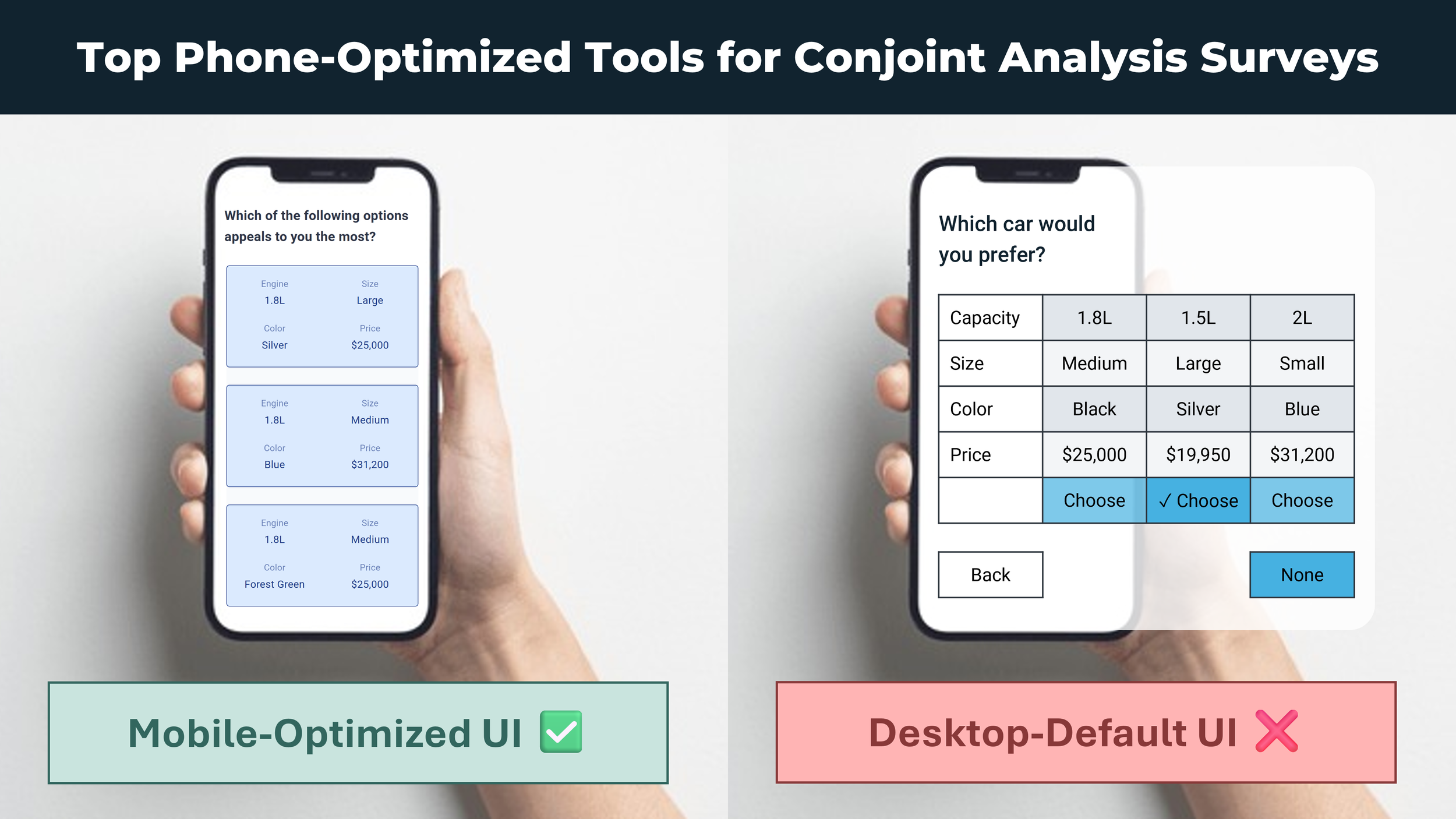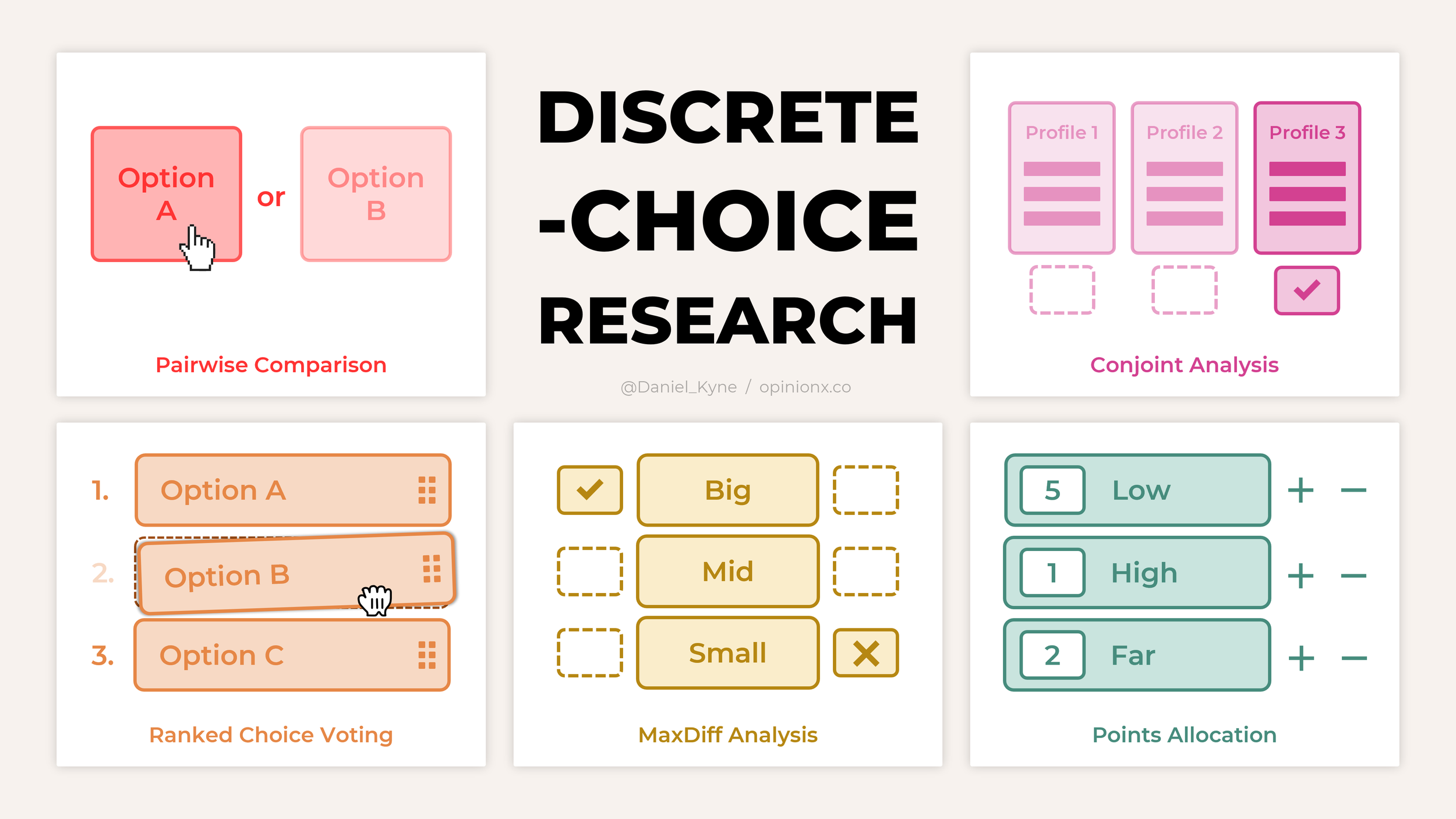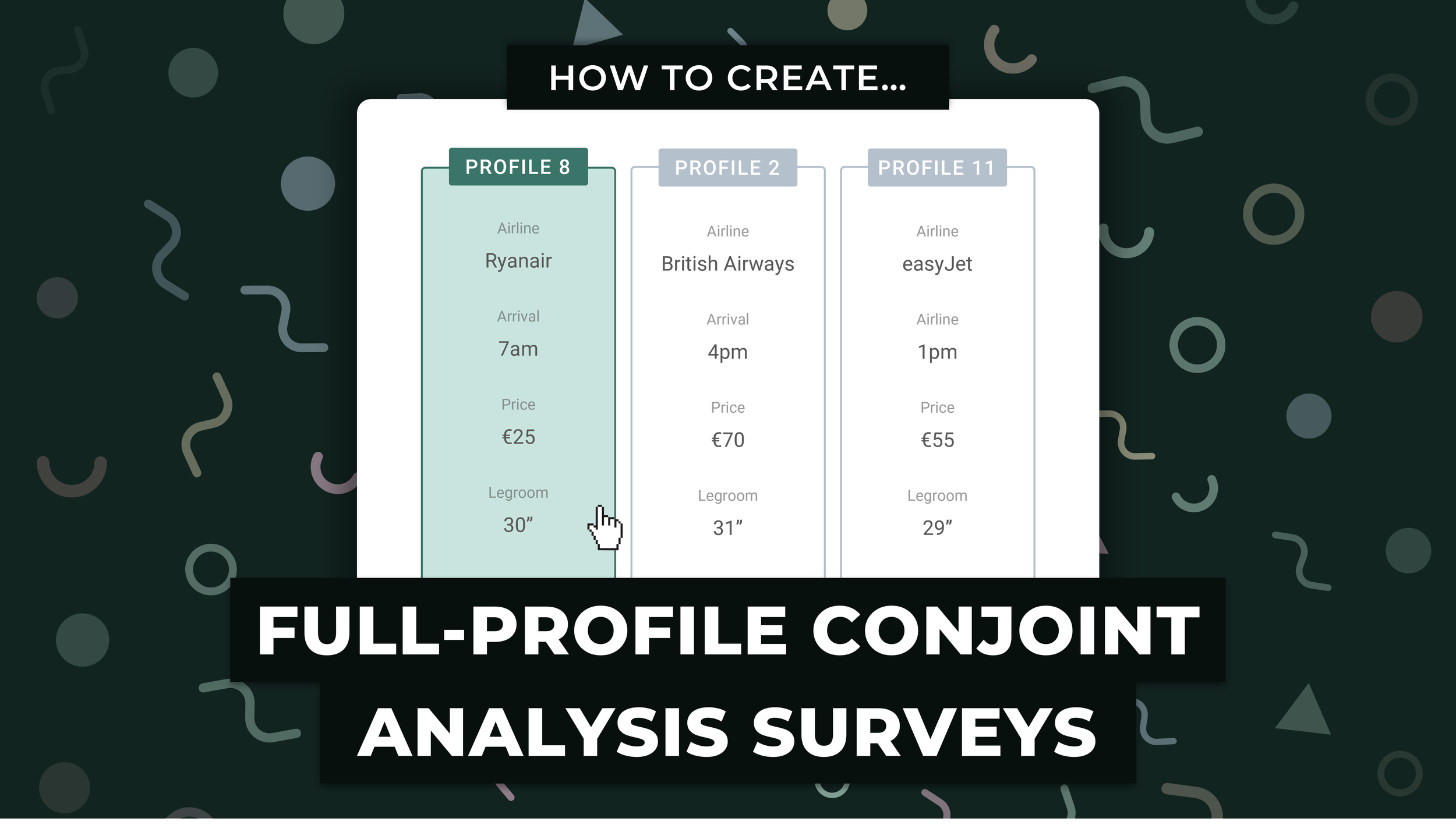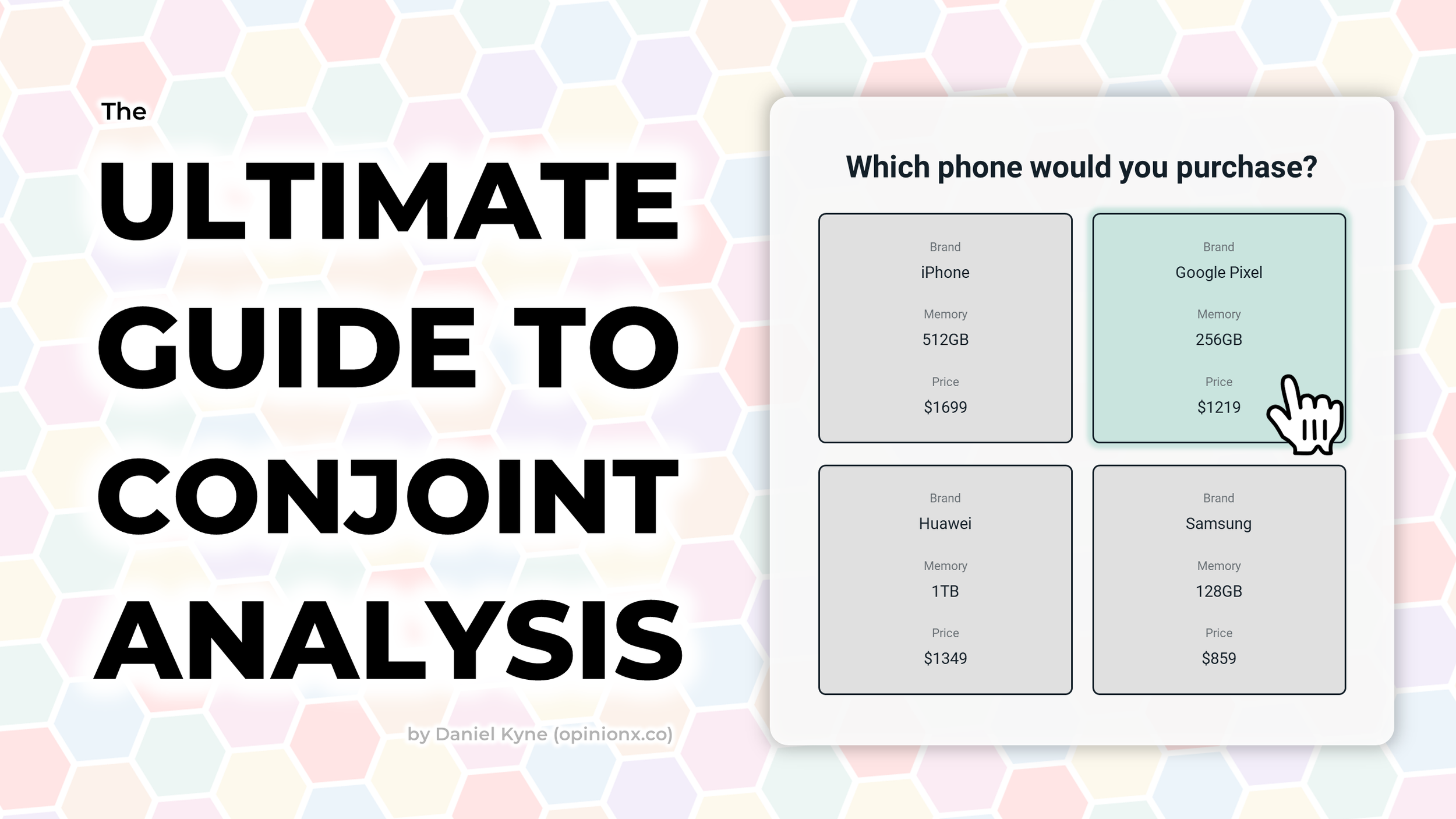
The Full-Stack Researcher
Guides, Case Studies, & Actionable Advice for Mixed-Methods User Research
The segmentation survey VEED used to refine their Ideal Customer Profile definition
How VEED, the AI video creation platform used by over 10M globally, used a maxdiff and segmentation analysis survey to refine their Ideal Customer Profile definition and build a sharper strategy.
Using MaxDiff Analysis To Measure Customer Concerns (Airbnb Case Study)
Airbnb hosts were furious when the new Services Tab was launched in Summer 2025. This case study looks at what Airbnb's product team should do to turn customer frustration over their latest product launch into a raging success.
Gabor Granger Method for Pricing Surveys (Example & Tools)
Gabor Granger is a survey that measures the optimal price for a product or service. It works by showing customers a series of hypothetical prices and asking them if they would buy the product at this price or not.
Pick The Right Ranking Method For Your Survey: 4 Simple Steps
Four questions to help you pick the right method for your ranking survey, between Conjoint Analysis, Pairwise Comparison, MaxDiff Analysis, Ranked Choice Voting, and Points Allocation ranking.
Best Conjoint Analysis Tools for Mobile Phone Surveys
UX for mobile survey respondents varies wildly between the most popular conjoint analysis platforms. I reviewed 8 of the most popular conjoint tools to assess their responsive design for mobile conjoint research.
Discrete Choice Experiment: Methods, Examples, Tools
A discrete choice experiment is a type of survey that measures the relative importance of a set of options according to a group of people, including conjoint, maxdiff, pairwise comparison, and more.
Optimizing SaaS Pricing via MaxDiff & Conjoint Analysis Surveys (Case Study)
Real case study showing how Dogo used a maxdiff analysis and conjoint survey to optimize their pricing model, ultimately driving +9.5% conversion rate and +13% ARPU.
How To Measure Marginal Willingness To Pay via Conjoint Analysis (Pricing Research Guide)
Marginal Willingness To Pay measures how much a customer would spend to change one specific feature of your product. This guide explains how to create a MWTP analysis along with real examples.
How To Run An Opportunity Gap Survey (User Research Guide)
Opportunity Gap Surveys identify which discovery research insights have the highest potential for impact by measuring how important each need is to your users and comparing that against how satisfied those same users are with their current solutions. The name comes from this comparison — finding the gap between importance and satisfaction allows you to spot opportunities that are very important to your customers but poorly served today.
Van Westendorp for Pricing Research (Survey Guide)
A Van Westendorp is a survey method used to measure a product’s optimal price. Known specifically as the Van Westendorp Price Sensitivity Meter, or sometimes just VM PSM for short, this survey method shows you how price changes impact your customers’ willingness to pay for your product.
How To Create A Full-Profile Conjoint Analysis Survey
In Full-Profile Conjoint Analysis, a list of fixed profiles is created in advance rather than allowing attribute options to be randomly selected, and the results show which overall profiles were most and least likely to be selected.
How To Conduct A Double Materiality Assessment (Full Guide)
Materiality assessments are not difficult to administer yourself. The various free guides you’ll find on the internet will try to convince you that materiality assessments are complex and time-consuming processes. In reality, these guides purposely exclude any information about how to actually measure materiality so that you’ll be forced to pay them >$100,000/year to conduct these assessments for you.
18 Tools That Save Partial Submissions & Incomplete Surveys
Which survey tools autosave answers? I tested 18 of the most popular survey platforms to see which offer partial completion functionality to capture incomplete sessions when respondents drop-out.
Competing Values Framework: Methods, Tools, Templates
The Competing Values Framework (CVF) is one of the most popular academic theories for understanding how organizations act. It uses a simple 2x2 matrix to quantitatively map an organization’s culture in a simple yet empirically validated way that allows leaders to plan strategies to change their culture over time.
What is a Contingency Table in Survey Analysis?
Contingency tables compare two or more types of data to see how often they overlap in a matrix table. Learn how they works, what the best tools are, when to use it for your research, and what its advantages are over other survey analysis methods.
Crosstab Analysis: Explanation, Examples, Methods, Advantages, Use Cases, Tools
Crosstab Analysis lets you compare two or more types of data to see how often they overlap in a simple matrix table format. Learn how crosstabulation works, what the best tools are, when to use it for your research, and what its advantages are over other survey analysis methods.
The Ultimate Guide to Conjoint Analysis: Explanation, Examples, Types, Tools, & Use Cases
Conjoint analysis is a popular market research method for understanding what’s most important to customers when they’re picking between products during a purchase decision. This post explains what Conjoint Analysis is, how it works, and how to design your own conjoint survey.
Multivoting: 6 Best Tools & Techniques for Group Decisions
Multivoting is a way for a group of people to prioritize a list of options by allowing each person to vote for multiple options in order of their personal preference. It’s a popular way to make group decision-making a more participatory and consensus-driven activity.

